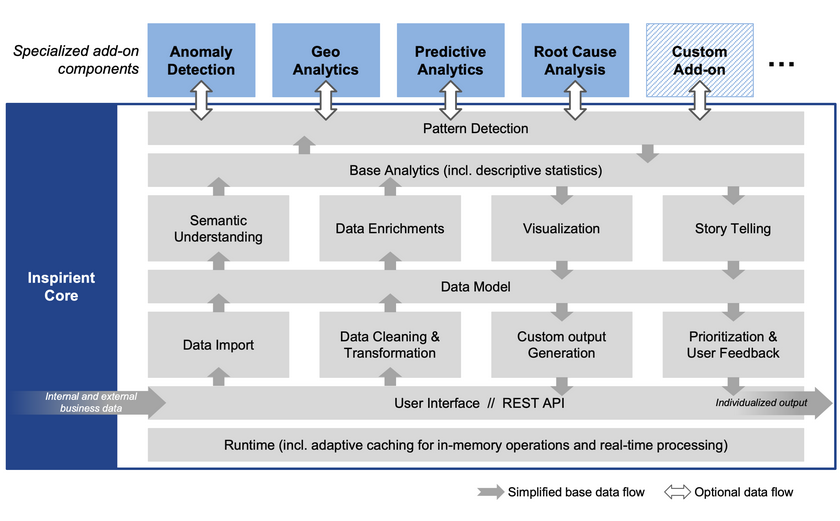The core idea behind Autonomous Analytics is that the process of analysing a dataset can be broken into a sequence of reasoning steps, each of which can then be automated. This involves many instances of deciding whether a specific reasoning step may be applied to a dataset. For example, if a column in a table contains values such as SE08 7IC, WC86 4OK and NW82 0MZ, it may be deduced that these values are United Kingdom postcodes, which would then allow for geographic analyses to be applied to any numeric columns in the same table.
Reasoning steps comprise reasoning about format and structure of the input data, statistical and analytical properties of each table and dimension, decisions about which analytical methods are applicable, decisions on which of the derived results may be of interest to a user, and how to best communicate and visualise these results. If applied systematically to a dataset, all these reasoning steps in concert allow the engine to automatically derive a business-ready result directly from the raw data without the need for additional human input.

All reasoning steps are carried out under uncertainty, which means that – just as for human analysts – there is no 100% certainty that every single deduction is correct. For example, the UK postcodes mentioned above could also be some random database ID values, some of which just happened to look similar to UK postcodes. For an Autonomous Analytics system this means that there is a certain chance that any reasoning step may be incorrect. But the system will carry on reasoning anyway, just as a good human analyst will make assumptions to avoid getting stuck. And just as a good human analyst does, an Autonomous Analytics system documents all of its assumptions, even all reasoning steps, it makes so that well-informed decisions can be made based on these results.
The Inspirient Automated Analytics Engine
The Inspirient Automated Analytics Engine is an Autonomous Analytics system, as introduced above. It comprises more than 300 hundred classifiers to competently make reasoning choices for common business datasets. In addition, it is fine-tuned to make these choices very efficiently, even for large datasets, so that results can be made available within a matter of minutes for small datasets, and in no more than 2-4 hours for larger datasets.

The full architecture and the capabilities of all components are documented at the Inspirient Automated Analytics Engine page.